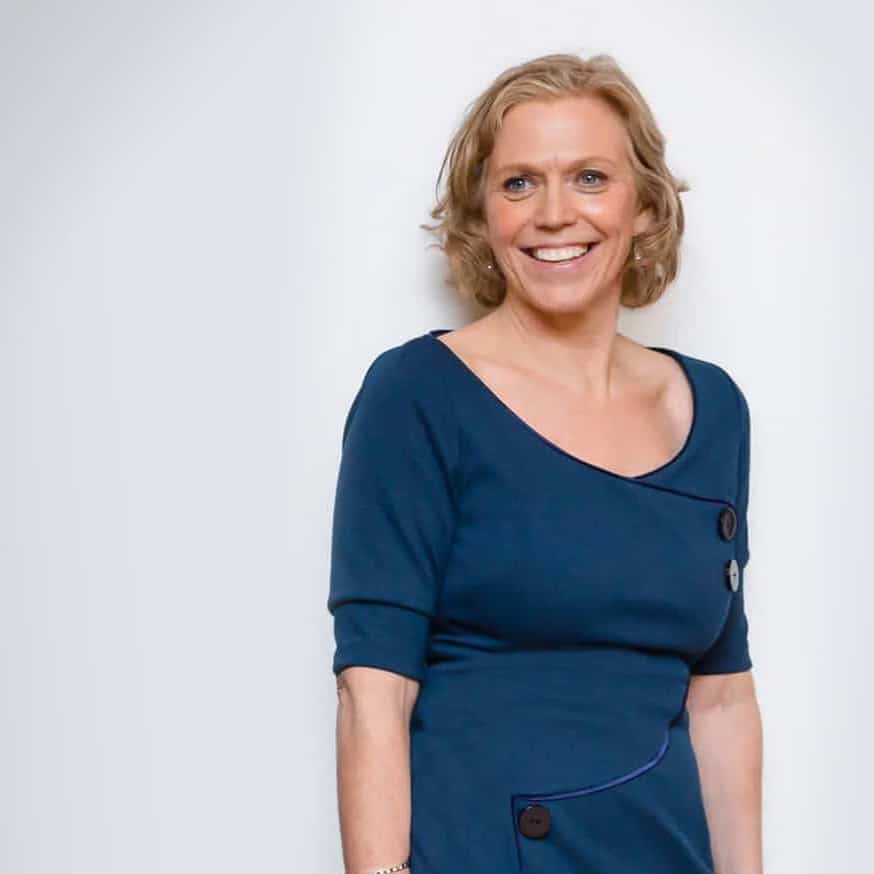
Get the wrong people off the bus, get the right people in the right seats
"Decide on a vision, create a culture and then get the wrong people off the bus and the right people into the right seats"
Nitzan Regev-Sanders | Co-founder | The Creative Copywriter
Questions:
> How would you explain what “get the wrong people off the bus, get the right people into the right seats” means?
> What do you think about this ‘advice’?
> Would you give this advice to other people?
> If not, what alternative advice would you give to agency leaders?
> What steps does Nitzan Regev-Sanders go through before deciding someone is ‘wrong’ for her company?
How would you explain what “get the wrong people off the bus, get the right people into the right seats” means?
This is a piece of advice that you hear quite a lot, so let's break it down. “Getting people off the bus” means letting go or firing members of your team, who just aren't aligned with your culture or who are toxic to your working environment.
Basically people who just aren't a good fit for your company and who aren't adding the value that you expect out of a team member.
The second part of the sentence:
“The right people into the right seat”, which is a bit more interesting, means that for your team to excel you want to make sure that the team members who do fit in well within your company are positioned in the roles that really allow them to shine and to maximise their skills and their passion. So that everyone is in the correct role for them to give the most value to your company.
Here’s a very quick example:
In the early days of The Creative Copywriter - before I even joined - it was just Konrad, our CEO and Ella, his best mate from school.
For some reason, Ella was given the role of project manager and salesperson - which is a very strange combination in itself. Ella will be the first to admit that she’s not a project manager. Her mind doesn't work that way. Back then she was really disorganised and she also hated sales. So… she ended up quitting and then coming back as a copywriter and today she's our head copywriter.
Today Ella is one of the leaders in our agency and one of the best copywriters that I've ever come across - I come across quite a few. This is something that tends to happen quite a lot with young businesses, where each person has to wear a lot of hats. At that point you're not exactly sure which roles you need or what roles would be best suited for someone. And you lack the experience of hiring the correct way.
What do you think about this ‘advice’?
Like a lot of other “shallow” business advice, it’s true overall. But it's also super obvious. I mean, obviously you should get rid of people who aren't the right fit for you, make sure that you get the right people who are the right fit for your business and make sure that they are in the best role for them and the company.
It’s just a bit simplistic and it misses a few steps that you really should take before applying this piece of advice.
Would you give this advice to other people?
… not necessarily.
If not, what alternative advice would you give to agency leaders?
If I was to give this sort of advice to other agency leaders, I would add a few elements to it. I'd say: Decide on a vision, create a culture and then get the wrong people off the bus and the right people into the right seats.
In order for you to be able to even know who are the wrong people on the bus and who are the right people on the bus and which seats they should be occupying and which seat even exists or should exist on your bus, you need to have a vision to know where you're going and you need to have a defined culture.
First of all, ask yourself, where is it that you wanna be in 5 years / 10 years from now?
You personally?
Do you want financial freedom?
Do you want to continue leading an agency?
Ask yourself what kind of agency do you want to have?
Do you want to have a lifestyle business?
Do you want to grow to sell?
Once you answer these questions you can really start defining your vision for your agency. And once you have that vision, you can start working your way backwards and deciding on your 5 year goal and your 3 year picture. How will your business look like in 3 years?
Not just in terms of the numbers and the figures, but also what will your team look like, how will your office look like?
Will you even have an office?
Etc.
You can also define your goals and project for this exact year. That way you will know where you are right now and where you're heading within a year from now.
At The Creative Copywriter, we use the vision traction organiser tool, which is part of the EOS system that I highly recommend reading about. Like the book Get A Grip from Gino Wickman. I'm not saying that you should follow the entire thing, just pick up what's right for you - I highly recommend it.
Only once you have that vision worked out and you know where you're going, you can start designing your culture around it.
So ask yourself questions like:
What values and traits are the right ones to help you realise this vision?
Would you offer flexible working or remote working?
Would you run a flat structure or hierarchical structure?
The answers to all of these questions will basically be your guide to the type of people who are right for your team and for deciding which roles are essential for your business.
That’s why only when you have your vision and culture in place, are you in a position to make a really informed decision about who is the wrong person on your bus and who is the right person. Finally which seats they should be sitting in.
What steps does Nitzan Regev-Sanders go through before deciding someone is ‘wrong’ for her company?
This is quite a sensitive question - as we're essentially talking about letting people go. I'll focus on how we decide or how we know someone is wrong for our company. So we operate in a flat structure, which means that there are no line managers.
There is no one telling you what to do at any single moment. No one looking over your shoulder and also no one holding your hand once you've eased into your role and have gone through your training. We're also very flexible. We're much more task based than we are time based. There's no need for anyone to stick around and move their mouse.
If they finished their tasks for the day, there's no nine to five. There’s also no need to take time off for appointments. You can work from home, if that works best for you. Work from the office, if that works best for you - depending on your role of course. In order to make a flexible and trusting culture like this work, we have very well defined processes.
I love processes. They are my passion. I'm a process nerd. Also every person that comes into the company goes through very thorough training. The most important thing we need in order to make our culture work is a team of adults. I want to go back to the advice that I gave in the previous answer and just add something to it.
I said the steps are:
1. Decide on a vision
2. Create a culture
3. Then get the wrong people off the bus and the right adults into the right seat.
By adults I mean people who can own their shit. “Own your shit” is actually one of our cultural values. People who can work without supervision and people who find their motivation in the company and the culture we're building together.
This bigger thing that we're creating together rather than being told what to do by someone else. Keeping all that in mind, it's actually quite simple for us to tell when someone is not a good fit and we usually clock it quickly.
I'd say there are 3 indicators that someone is not quite right for us:
1. We notice that person is actually finding it very difficult to do their job. They find it difficult to understand which tasks they need to complete and how to complete them. And we see that the person is drowning without close supervision at every stage of their role.
We find that a lot of people who come from very corporate environments are very excited about the opportunity to work independently and being treated like adults. But when it comes to actually performing the role without the close supervision that they're used to, they can't handle it, which is actually quite tragic.
2. We notice that the employee is taking the piss. Because our culture is so flexible and trusting, it's actually quite easy for someone who's not the right fit for us to slip into all kinds of behaviours that they think are not noticeable, but are actually very obvious. For example starting at 11 and finishing at 3 every day, taking long naps, being absent from Slack or Flip, which are the tools, not getting their work done and procrastinating. Thinking no one would really notice as there are no line managers. But we always say to new starters: “With great freedom comes great responsibility.” We have a team of adults, everyone is highly invested and we have a team of superstars. Every single one of them is absolutely incredible in what they do. We take a very long time to hire, we're super picky and we are that way for a reason. Because everyone is so invested and so into it, it's very easy to tell when someone is taking advantage of the flexibility without any satisfactory output.
3. This indicator flows on from the previous one: It's when someone's name keeps on being brought up in high up conversations. Conversations between Konrad (our CEO) and I. Or between our people and culture manager and I, and not in a positive way. Since we are all invested adults, we have a completely blame free culture. We all know that 99% of the issues either stem from the process needing a tweak or from tiny mistakes that we all make as humans. There’s no need for finger pointing.
That means if someone's name comes up more than 3 times in high up conversations in a negative connotation, we know we have an issue on our hands. If someone's name comes up 3 times often, then you should think about letting them go is also a shallow business advice. But for us, it actually really works. It is a rule that we go by. We don't let someone go after 3 times, but we know that we have some kind of issue on our hands. And again 99.9% of the time, this would be in the first few months of a new employee. Or typically after they finish their training they should be embedded in the culture, but they just aren't.
To summarise, we have 3 indicators of when someone is wrong for our team:
They can't handle not having constant supervision.
They take the piss out of the flexibility that we offer.
Their name keeps on coming up in “high up” conversation in a negative connotation.
Nitzan Regev-Sanders' full bio
Nitzan Regev-Sanders is co-founder and Managing Director of a charming team of strategic word-slingers, known as The Creative Copywriter. They’re a fast-growing content strategy and copywriting agency that blend art with science to help bold brands sell more stuff.
Alongside TCC, Nitzan has propelled The Creative Copywriter Academy into fruition. Bringing a successful edtech product to the market that had over 1000 students in its first year. Her mission? To break the boundaries of traditional organisational structure, process and culture. And create people-first systems that put happiness at the heart of the workplace.
Humble promo of Nitzan Regev-Sanders and The Creative Copywriter
Nitzan and her partner Konrad have been building a great place for copywriters to level up their skills. They care as much about their team and freelancers as they care about their clients. Always finding new ways to support copywriters, for example by launching an academy for copywriters to help them kickstart their freelancer activity. I highly recommend The Creative Copywriter as a place to work, learn and also as a partner if you are an agency looking to offer copywriting as part of your service.
Cheeeeersss!
Daniel (Polymensa founder)
Explore other perspectives
Paul Stephen
Founder @ Sagittarius
"We have been using this philosophy to underpin our whole approach to talent"
Domenica Di Lieto
Founder @ Emerging Communications
"You need a team. Not just any team, the right team"
Tariq Mohammed
Founder @ 360 OM
"I consider it great advice, especially in a fast paced agency environment"
Jenny Kitchen
Co-founder @ Yoyo Design
"It can be an effective guide but you shouldn't be blindly wedded to it"

The Rabbit Hole: FakeYou
My girlfriend was giggling uncontrollably and I thought Snoop Dog was in our house - it sounded so real! And all I can remember is being flung into this week’s rabbit hole of all too familiar voices. Wonder which one is going to be your favourite - shall we have a listen?

Blindspot: Worldwide Cost Of Living Survey
So Singapore and New York still top the most expensive cities in the world - according to the WCOL survey. Not surprised, given the dollar in both of these countries has been really strong in 2022.
Random fact, German is my mother tongue and I only just found out that the word “dollar” originally comes from the German word “Taler” (Joachimstaler to be precise). Which brings me loads of childhood memories of chocolate coins - because the word Taler is kinda like a coin and we only really ever use the word Taler in that context now (especially during this time of the year). Anyway, if you fancy understanding why the word ‘dollar’ is now used in 20 different currencies - check out this read.
So the highest inflation rate in 2022 is still in Caracas, at a whopping 132% - it was so high WCOL decided to omit it from the results, because it skews the averages. It makes you wonder how many of these cases are being omitted from the stats we see flashing up on news stories each day - to make the news more sellable!?
The good news - according to the WCOL survey - is that inflation will significantly ease off in 2023.
See the report here





